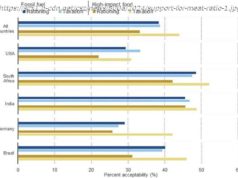For many people, holidays in the snow are as much a part of the end of the year as Christmas trees and fireworks. As global warming progresses, however, white slopes are becoming increasingly rare. Researchers at the University of Basel have calculated how well one of Switzerland’s largest ski resorts will remain snow reliable with technical snowmaking by the year 2100, and how much water this snow will consume.
For many people, holidays in the snow are as much a part of the end of the year as Christmas trees and fireworks. As global warming progresses, however, white slopes are becoming increasingly rare. Researchers at the University of Basel have calculated how well one of Switzerland’s largest ski resorts will remain snow reliable with technical snowmaking by the year 2100, and how much water this snow will consume.
The future for ski sports in Switzerland looks anything but rosy—or rather white. Current climate models predict that there will be more precipitation in winter in the coming decades, but that it will fall as rain instead of snow. Despite this, one investor recently spent several million Swiss francs on expanding the Andermatt-Sedrun-Disentis ski resort. A short-sighted decision they will regret in future?
A research team led by Dr. Erika Hiltbrunner from the Department of Environmental Sciences at the University of Basel has now calculated the extent to which this ski resort can maintain its economically important Christmas holidays and a ski season of at least 100 days with and without snowmaking.
The team collected data on the aspects of the slopes, where and when the snow is produced at the ski resort and with how much water. They then applied the latest climate change scenarios (CH2018) in combination with the SkiSim 2.0 simulation software for projections of snow conditions with and without technical snowmaking. The results of their investigations were recently published in the International Journal of Biometeorology.






